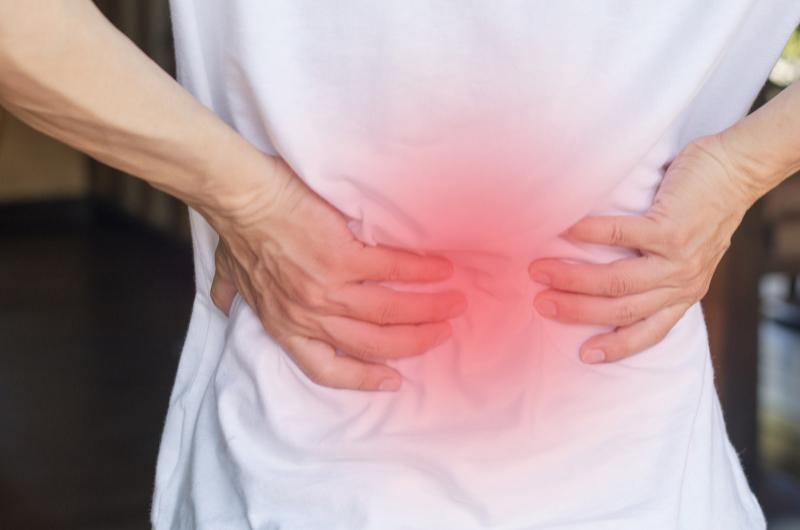Car accidents can often result in neck and back injuries, which can have devastating physical effects. One of the types of neck and back injuries that result from car accidents are called herniated discs. As an experienced car accident lawyer, I've seen how these types of injuries often require extensive treatment which could last for months or even several years. The following article will prove an in-depth analysis of herniated disc injuries.
What kind of spinal injuries typically occur from car accidents?
A car crash exerts a tremendous amount of force on your spinal column, and as such, neck and back injuries are incredibly common after a high-impact car accident. Here are some of the most common spinal injuries that occur from car accidents:
- Whiplash: Whiplash is a common injury that can result from a car accident. It is the result of a car making a sudden and unexpected maneuver which causes the neck to be “whipped” rapidly back and forth. This motion can cause major pain to the neck muscles and may manifest as neck pain, neck stiffness, or loss of range of motion. If you experience neck pain after an accident, you should seek medical attention immediately.
- Sprains and strains: Lumbar spine sprains and strains are another common back injury following a car accident. The force of impact stemming from a car crash can cause the muscles, tendons, and ligaments in the lower back to overstretch or tear. Furthermore, back sprains and strains usually lead to acute lower back pain, tightness, and muscle spasms.
- Joint injuries: A high-impact car crash can injure the facet joints that connect the vertebrae in your spine. Facet joint pain often results in lower back pain, inflammation, and stiffness.
- Spinal disc damage: There are 23 discs located along the spine that sit between vertebrae and provide cushioning and support. A high-impact car crash can damage or displace one or more discs. When this happens, it can result in bulging discs (which occurs when a disc shifts out of place and bulges into the spinal canal), annular tears (which occurs when a crack forms in a disc’s tough outer ring of ligaments), and herniated discs.
.png?width=400&name=Untitled%20design%20(21).png)
What is a herniated disc?
A herniated disc, also referred to as a slipped disc or ruptured disc, is essentially an injury of the spine. Every person has a series of bones (also known as vertebrae) located along the spine, which stretches from the base of the skull to the tailbone. Additionally, there are round cushions called discs located between your vertebrae. These discs act as buffers between your vertebrae and allow you to bend and move your body with ease. When the inner part of one of these discs tears or leaks through the outer part (the annulus), it is referred to as a herniated disc.
What are some symptoms of a herniated disc?
The symptoms of a herniated disc depend on whether the area affected is the back or neck.
Herniated disc (back) symptoms
- Sciatic nerve pain (which is a severe pain that typically shoots down one side of your buttocks into your leg and sometimes the foot)
- Back pain
- Tingling or numbness in the legs and/or feet
- Muscle weakness
Herniated disc (neck) symptoms
- Pain near or between your shoulder blades
- Pain that travels to your shoulder, arm, hand, or fingers
- Neck pain (especially in the back and on the sides of your neck)
- Pain that increases when you bend or turn your neck
- Numbness or tingling in your arms
At what point should I see a doctor?
If you have been injured in a car accident, it is recommended that you seek medical attention right away, whether that means going right to the emergency room or your primary care physician. This is especially true because sometimes an injury is much more serious than you may have initially assumed. In situations where you are feeling pain in your neck or back, you should see your doctor if:
- You develop chronic pain interferes with the aspects of your daily life, such as going to work or performing household duties
- Your symptoms do not improve after four to six weeks
- Your symptoms seem to consistently get worse
- You develop loss of bladder or bowel control
- You notice tingling, numbness, or loss of strength in your arms, hands, legs, or feet
- You have trouble standing or walking
How is a herniated disc diagnosed?
When you go in to get looked at, your healthcare provider will perform a thorough exam. During this exam, your provider will assess your pain, muscle reflexes, sensation, and muscle strength. After performing this assessment, your provider may find it necessary to order one or more of the following tests:
- Magnetic resonance imaging (MRI): The most common and accurate imaging test to identify a herniated disc is an MRI. An MRI is a medical imaging technique that uses a magnetic field and computer-generated radio waves to create detailed images of the organs and tissues in your body. This test should be able to accurately pinpoint the specific cause and location of your pain.
- X-rays: X-ray imaging tests use radiation to create pictures of the inside of your body. X-rays should help to rule out other potential causes of your back or neck pain.
- Computed tomography (CT): A CT scan is a medical imaging technique used in radiology to get detailed images of the bones of your spine. These scans are helpful, as herniated discs can move into the space around your spinal cord and nerves and press on them, causing major pain.
- Myelogram: A myelogram test involves an injection of dye into your spine using X-ray guidance for a CT scan, which can reveal a narrowing of the spinal canal and the location of your herniated disc.
- Electromyogram (EMG): An EMG test involves placing small needles into various muscles and evaluating the function of your nerves. This kind of test helps determine which nerves are being affected by the herniated disc.
What kind of treatments are available for herniated discs?
Your healthcare provider might recommend some of the following medical treatments if your symptoms are not improving or are getting worse:
- Medication: If your pain is minimal, your healthcare provider may prescribe an anti-inflammatory pain reliever medication or a muscle relaxant.
- Physical therapy: The role of a physical therapist is to develop an exercise program to help relieve pressure on your spinal nerves. The purpose of this kind of program is to loosen tight muscles and improve circulation.
- Spinal injections: A spinal injection is a shot of steroid medication which is inserted directly into your spine. The medication helps reduce swelling and inflammation of the nerve from the disc herniation, which will allow your body to heal and return to activity much faster.
- Surgery: A large, herniated disc might injure nerves to the bladder or bowel, which may require emergency surgery. However, in non emergency cases, surgery can still be an option when other treatments fail. For example, the goal of spinal decompression surgery such as discectomy and laminectomy, is to relieve the pressure on these nerve roots.
What types of damages are awarded in herniated disc cases?
In car accident cases, if you suffered a herniated disc you will likely be eligible to receive both general damages and special damages.
General Damages
General damages refer to compensation for the physical and mental injuries that an individual has suffered. Although each personal injury case is different, general damages typically include:
- Physical disfigurement
- Mental anguish
- Physical impairment
- Lowered quality of life
- Physical pain and suffering
- Loss of companionship (awarded to the family members of the decedent in cases that involve wrongful death)
Special or Economic Damages
In a personal injury claim, special or economic damages are awarded to compensate the injured party for any losses suffered because of the actions of the defendant. These types of damages typically include:
- Past and future medical bills
- Loss of irreplaceable items
- Replacement and repair of damaged property
- Loss of earning capacity and lost wages
Are there any ways to prevent herniated disc injuries while driving?
Of course, not all herniated disc injuries can be prevented. However, there are a few practical tips that may prevent some of these injuries from occurring, which include:
- Because auto accidents are one of the most common causes of these kinds of injuries, you should always ensure that you and any passengers are wearing seat belts. Additionally, you should ensure that any children are using an age-and weight-appropriate child safety seat and that children under the age of 12 ride in the back seat.
- Never drive while drowsy or under the influence of drugs or alcohol.
- Avoid distractions while driving and make sure that you pay close attention to the road.
- Note that you should never try to move someone who has a suspected neck or back injury; attempting to move someone with this type of injury could cause additional damage. If you or a passenger experiences a neck or back injury after an accident, you should let emergency professionals know immediately.
Were You Recently Injured in a Car Accident? Speak to an Illinois Personal Injury Attorney
If you are a recent car accident victim interested in seeking legal advice, the law firm of Palermo Law Group can help. We will work hard to help you prepare a strong personal injury case, communicate with insurance companies, and will ensure that you are able to hold the at-fault driver responsible for your injuries. Call us today at (630)-684-2332 or use our online form to schedule a free consultation with one of our experienced personal injury lawyers.


